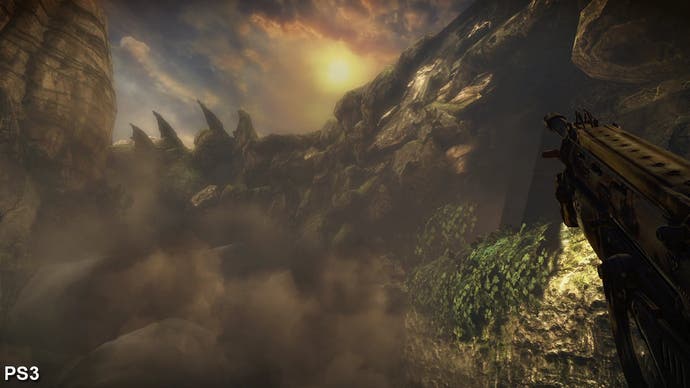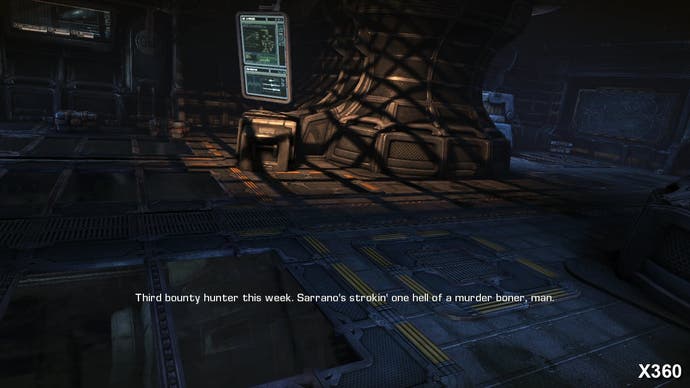Face-Off: Bulletstorm
Lead better?
| Xbox 360 | PlayStation 3 | |
|---|---|---|
| Disc Size | 5.0GB | 5.94GB |
| Install | 5.0GB | - |
| Surround Support | Dolby Digital | Dolby Digital, 5.1LPCM |
Unreal Engine 3 has become almost ubiquitous in the current-generation console era, but it's comparatively rare that we get to see the tech being wielded by the studio that actually developed it. It's hard to believe that the last time Epic shipped a console title was Xbox 360 exclusive Gears of War II, way back in November 2008.
Bulletstorm is a hugely important game for the developer: not only does Epic face the challenge of establishing a new IP in what is the most fiercely competitive area of the games business, but the final game also serves as a shop window of sorts in championing the UE3 tech to prospective licensees.
The good news is that regardless of platform, Bulletstorm is an astonishingly good title that deserves to be an enormous success for all the reasons pointed out by Christian Donlan in the 9/10 Eurogamer review. Over and above the superb gameplay, the Gears of War-level production values and a funny script, old-skool players should congratulate the developers on making score-attack games cool again: Bulletstorm's campaign mode guides you through the basics, encourages experimentation, rewards smart-thinking and makes you want to go back to improve your performance.
However, the not-so-good news is that there's a clear pecking order in terms of the three major SKUs, and as we shall demonstrate through the course of this article, there is a very clear winner that earns its place at the top not just through possessing more visual features or superior frame-rates, but also in being the better game to play.
To begin with though, we'll concentrate on the visuals. There's a triple-format comparison gallery to check out, along with the first of three head-to-head movies, this one covering off the Xbox 360 and PlayStation 3 versions of the game.
In terms of the basic setup of Bulletstorm's visuals, there is a lot in common between the two console SKUs. Native resolution is 720p on both systems with anti-aliasing on neither, and from what we can see the quality of the textures appears to be effectively identical too. However, the very first clip in the comparison illustrates quite dramatically that certain effects in the game only appear in the Xbox 360 version while others are clearly pared back on PlayStation 3.
This is an interesting - and unexpected - state of affairs. A core part of Epic's business is in licensing out Unreal Engine 3 technology and it's important that the engine should be seen to perform identically on both console platforms, especially when competing products like CryEngine 3 are promising identical outputs on both Microsoft and Sony platforms (something we'll put to the test when Crysis 2 finally appears).
While many of the differences in the visuals will probably pass unnoticed, it's difficult to avoid the fact that light shafts are completely absent in the PS3 version of Bulletstorm when both PC and Xbox 360 games use them so extensively. Epic is clearly quite proud of this tech, and rightfully so, as it can look quite spectacular - there's even a demo loop in the titles designed to show it off.
As you can see, removing it diminishes the impact of the scene significantly.
The use of this effect is extensive throughout the game and appears to play a major part in lighting the exterior environments, to the point where even when the light shafts aren't obviously being displayed on-screen, they are undeniably having a more subtle impact on the overall lighting of the scene.
The PlayStation 3 version of Bulletstorm appears to cut out the dynamic aspect of the light shaft effect in favour of a flatter, somewhat more pedestrian effect. This is best illustrated in the initial shot of the head-to-head comparison video, where you see a big dollop of static bloom take the place of the rather more impressive effect you see on the 360 version.
Here are a couple of shots taken from the game (rather than the demo loop) illustrating both the subtle and more overt effect this tech has. In the first shot, we see light filtering past close-up scenery, producing a very pleasing, animated and impactful effect.
In the second shot we see how the lighting tech can have a much more subtle impact, even on scenes where the sky doesn't occupy so much of the scene. It's difficult to avoid the overall impression that the lighting is more flat and far less dynamic overall on the PlayStation 3 version of the game.
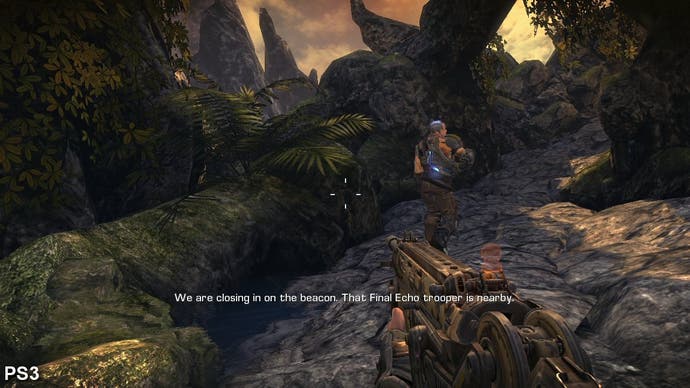
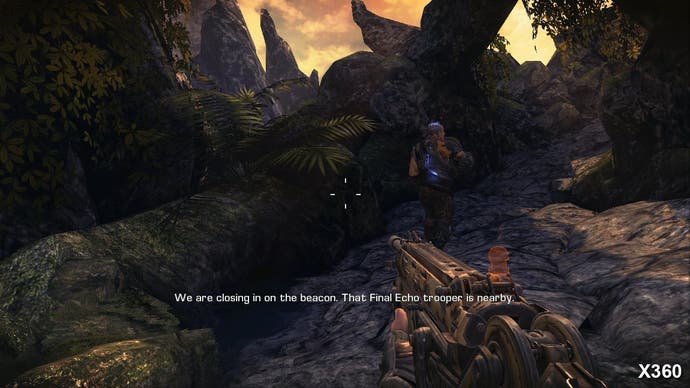

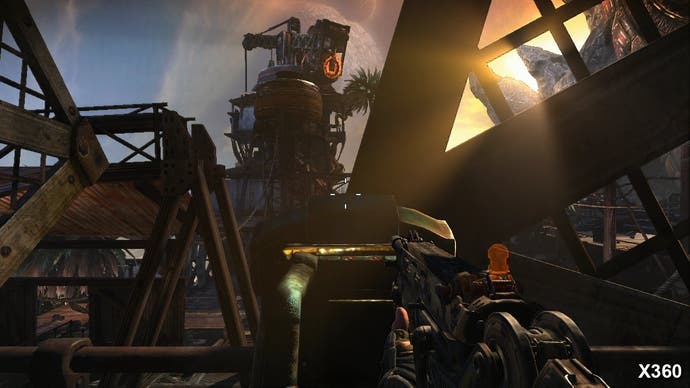
There is a raft of smaller visual differences too: occasionally there's the impression that shadows are pared back or simply absent on PlayStation 3 (and again, this may well tie into the rather flatter lighting we just discussed). There are also occasions where shadow blends nicely into light on PC and 360, but there's no such gradual fall-off in the same places on PlayStation 3 - again diminishing the quality of the lighting in places.
There are other elements that are curiously absent from the PS3 version of the game. Screen space ambient occlusion (SSAO) contributes additional depth to the scene, adding shadows to the nooks and crannies - it's a subtle effect for sure that's only implemented on Xbox 360 and PC, again making the PS3 version feel a touch flat in comparison.
Another interesting difference concerns the way fog is handled. Bulletstorm does like to throw a lot of alpha around in certain sequences and you can see that the PS3 implementation appears to have some clipping issues in places.
